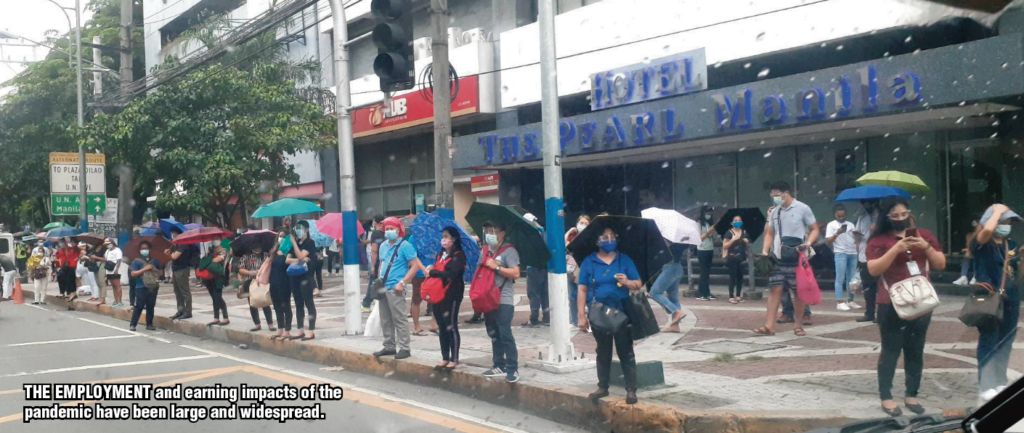
By Tony Lopez
First the good news: The COVID-19 pandemic has been contained, at least in Asia, says the World Bank in its October 2020 update on the East Asia and the Pacific (EAP) economies. Shutdowns or lockdowns have been phased out in most countries, except in the Philippines.
Now the bad news:
• Pandemic is contained, yes in Asia, but not in the Philippines and Indonesia, cautions the World Bank.
The World Bank report, released on Oct. 1, 2020, is not at all kind to the Philippines – and Indonesia. It says:
“Indonesia and the Philippines face uncertain prospects.
“The region’s two most populous countries after China have not so far succeeded in controlling the pandemic. Indonesia has not imposed strict lockdowns and seems to be relying on softer measures, while the Philippines has gone on a cycle of repeated strict lockdowns and reopenings.
“Both countries have the advantage of young populations but suffer from large informal sectors and poor living conditions for a large fraction of their population. Indonesia is much less exposed than the Philippines to the rest of the world through trade, tourism, and remittances. Indonesia’s output is therefore projected to be less affected than that of the Philippines, but the outlook is uncertain. Indonesia, because of domestic conditions, and the Philippines, because of both domestic and external conditions, face the prospect of an uneven and volatile economic recovery.”
Per the Worldometers, in the whole of Asia, outside South Asia, the Philippines is No. 1, the epicenter of the COVID pandemic. In the world, the Philippines is No. 21 with 311,694 cases, behind No. 20 Pakistan (312,806); No. 15 Bangladesh (363,479), and No. 2 India (6.31 million).
And more bad news:
• The COVID-19 shock is expected to increase the number of poor people in the region by 38 million in 2020—including 33 million who would have otherwise escaped poverty, and another 5 million who would be pushed back into poverty. The poverty line is $5.50/day in 2011 purchasing power parity (PPP), or what the dollar can buy locally in equivalent goods and services, at 2011 prices.
Poverty in developing East Asia and Pacific could increase for the first time in 20 years, says the World Bank.
The COVID-19 pandemic is expected to reverse the sustained trend of poverty reduction in the region.
Prior to the onset of COVID-19, 33 million people were to escape poverty in 2020 based on the upper-middle-income class poverty line of $5.50 income per day.
Instead, poverty is likely to be 1.6–1.8 percentage points higher than previously projected. This translates into between 33 to 38 million more poor people than in the pre-COVID-19 scenario. Poverty in China will decline, but in the rest of the Asia, it will increase.

• For all economies in East Asia and the Pacific, except China, output is projected to remain well below pre-pandemic projections for the next two years.
• COVID-19 will have a lasting impact on inclusive longer-term growth by hurting investment, human capital, and productivity. Public and private indebtedness, along with worsening bank balance sheets and increased uncertainty, are likely to inhibit public and private investment, as well as pose a risk to economic stability.
• Sickness, food insecurity, job losses, and school closures could lead to the erosion of human capital and earning losses that last a lifetime.
• The global economy has sunk into a major recession.
This pandemic crisis combines the worst features of all previous crises: a simultaneous supply and demand shock; domestic, regional, and global in scope; a projected long duration; and a high degree of uncertainty. It has been described as “the most adverse peacetime shock in over a century” (and is bringing about the largest contraction in global GDP per capita since World War II—a 5.6% decline in the first half of this year).
• Left unremedied, the adverse consequences of the pandemic could reduce Asia’s growth over the next decade by one percentage point per year.
The poor will be disproportionately disempowered because of their lower level of access to hospitals, schools, jobs, and finance.
The adverse effects on growth and distribution may be partially offset by the COVID-19-induced acceleration in digital technologies, which could boost productivity and improve access to services for the poor.
• The employment and earning impacts of the pandemic have been large and widespread.
Firm sales in EAP countries are 38 to 58% lower in April or May 2020, compared to the same month in the previous year. The losses are widespread, even for countries such as Vietnam that have successfully contained the pandemic. Larger firms seem to be recovering faster than SMEs—with SMEs both more vulnerable to the crisis and less able to adapt by going digital.
Monthly sales of SMEs have fallen by 7 to 23 percentage points more than larger firms in EAP countries. Both wage employees and those working in family businesses, many of which are in the services sector, have experienced significant income declines.
• Indonesia and the Philippines face uncertain prospects. The region’s two most populous countries after China have not so far succeeded in controlling the pandemic.
Indonesia has not imposed strict lockdowns and seems to be relying on softer measures, while the Philippines has gone on a cycle of repeated strict lockdowns and reopenings.
Both countries have the advantage of young populations but suffer from large informal sectors and poor living conditions for a large fraction of their population.
Indonesia is much less exposed than the Philippines to the rest of the world through trade, tourism, and remittances.
Indonesia’s output is, therefore, projected to be less affected than that of the Philippines, but the outlook is uncertain. Indonesia, because of domestic conditions, and the Philippines, because of both domestic and external conditions, face the prospect of an uneven and volatile economic recovery.
In Asia, Philippine companies have incurred the deepest cuts in monthly sales—by 58% for micro enterprises, 60% for SMEs, and 51% for large firms. The comparable cuts in sales of Vietnamese firms – micro by 44%, SMEs 37, and large firms by 42%.
In 2020, the Philippines has its worst recession ever. Most economists see a decline in PH GDP (value of goods and services produced in a given year) of 8%; the World Bank sees a GDP cut of more than 6%, second lowest in Asia. Thailand will lead the drop – 8%.
